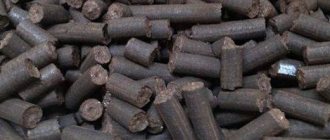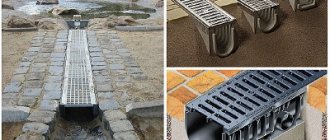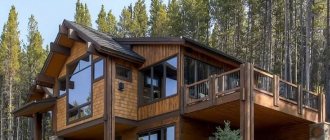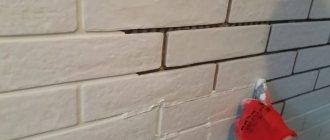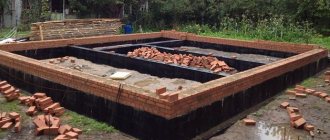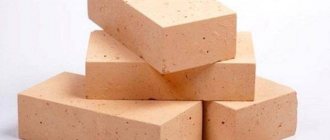Brick is one of the ancient materials for construction that is often used to this day. But few people know what brick is made from, from what mineral. It is an artificially produced stone of standard sizes. Its composition depends on the purpose in which it will be used. Since its invention, it has undergone great changes in production technology. And even despite the emergence of other cheaper and alternative materials for the construction of buildings and structures, it has not lost its leadership in the construction market.
At the moment, brick is the most popular building material in the world.
Production of ceramic material
Brick is made from clay, the quality of which largely determines the quality of the future building material.
It is easier to understand how ceramic bricks for masonry are made by considering the production in stages.
The first stage includes the process of selecting the chemical composition and extraction of clay from the quarry and preparing the charge (a mixture of starting materials). The second stage is the distribution of the mixture into molds and the natural drying of the brick. The third stage includes the final firing in the kiln.
It should be said about the main property of the raw materials from which ceramic bricks are made - it is plasticity. Plasticity is the ability of a material to take any shape without ruptures or cracks when exposed to external forces, and this shape must be maintained even after this impact. In the construction environment, plasticity is also called fat content. Fat content directly depends on the amount of aluminum oxide in the clay. The more oxide, the higher the ductility. The high content of aluminum oxide increases strength and fire resistance after firing.
Another very important characteristic is the sensitivity of clay to drying and firing. When processing it, air and fire shrinkage occurs. This is manifested in changes in the linear and volumetric size of the semi-finished product and brick. Highly plastic samples shrink by 10% or more (the norm is 6-8%), and this has a bad effect on resistance to cracks during drying and retention of shape during firing.
After geological exploration is completed, the development of the clay quarry and its transportation to the brick factory begins. There it is crushed in special mills to a powder state. Simultaneously with grinding, additives are added to the clay. The next operation involves adding water and mixing the clay mass. After this, molding and pressing occurs to give the future brick high strength. The resulting semi-finished product is dried for several days under natural conditions. Then firing takes place in kilns.
Stages of making ceramic bricks.
When performing this process, clay is sintered, which gives the brick strength, hardness and hygroscopicity. The pressed surface after firing has a glossy shine, which gives the brick an aesthetic appearance. Buildings made of ceramic bricks are durable and very reliable.
And today it is very common to find bricks of different colors. The structure of the brick can be either solid or hollow. Its strength and, accordingly, cost depend on its structure. The selection and chemical structure of raw materials for the production of ceramic bricks is a very complex and multi-level task.
Standard sizes
Standardization of brick products makes it much easier to calculate the required material for masonry work, determine the amount of mortar mixture, find out how much a brick weighs and calculate the weight of the masonry. The last indicator is one of the most important characteristics affecting the load-bearing capacity of the building as a whole.
Standard brick sizes Source stroy-podskazka.ru
Table of standard sizes and weights of brick products:
| №№ | Name | Size, mm | Characteristic | Weight, kg |
| 1 | Red ceramic | 250*120*65 | Hollow | 2.3, from 2.6 to 2.7 |
| 2 | 250*120*65 | Full-bodied | From 3.6 to 3.7 | |
| 3 | 250*85*65 | Euro (with voids) | From 2.1 to 2.2 | |
| 4 | Ceramic cladding thickened | 250*120*88 | Hollow | 3.2, from 3.6 to 3.7 |
| 5 | 250*85*88 | Euro (with voids) | From 3.0 to 3.1 | |
| 6 | Silicate | 250*120*65 | Single | From 3 to 3.2 |
| 7 | 250*120*88 | One and a half | From 4 to 4.8 | |
| 8 | 250*120*138 | Double | From 5 to 5.8 | |
| 9 | Clinker facing | 250*120*65 | Full-bodied | 4,2 |
| 10 | 250*90*65 | Hollow | 2,2 | |
| 11 | 250*60*65 | Hollow | 1,7 | |
| 12 | Hand-molded ceramic brick | 188*88*63 | Decorative | 1,9 |
The linear dimensions of brick products may differ slightly from the generally accepted standard. GOST regulates deviation tolerances: in length - up to 4 mm, in width and height - up to 3 mm.
The linear dimensions of the brick may differ Source iz-kirpicha.su
If you are interested in the dimensions of bricks for facing masonry. Notice how the perception of the facade changes with the use of different colors of the masonry joint. How many types of bricks do you see? That's right, one. This is how the same brick looks different when using different colors of Perel masonry mixture.
An example of using different colors of masonry mixture from Perel Source tekato.ru
The facade of your home can give a completely different impression. The effect of combining different colors of facing bricks and colored masonry mixtures opens up space for the most daring design solutions. Colored masonry mixtures from the Tecato company, these are more than 10 colors in the palette under the Perel, Prime and Promix trademarks.
Combining different colors of facing bricks and masonry mixtures Source tekato.ru
See also: Catalog of companies that specialize in the construction of brick houses
Production of silicate material
What is sand-lime brick made of?
Silicate, popularly called white because of its color, consists of quicklime and sand.
The main components are:
- river sand (quartz);
- quicklime;
- water.
Stages of manufacturing sand-lime bricks.
The share of sand is from 85 to 90% of its mass. For production, washed sand, cleared of all kinds of impurities and debris, is used, extracted from the coastal part and the bottom of rivers (river quarries), from waste from crushing rocks, from blast furnace slag, etc. The formation of a silicate mixture is influenced by the size of the sand grains and its form.
The amount of lime added to sand depends on its chemical characteristics. Brick factories use only quicklime. Basically it makes up 6-8% of the mass of sand. Limestone extracted from quarries is crushed and fired in kilns. The temperature at which firing takes place is 1000°C. At this temperature, crystalline bonds are destroyed and a new composition is created. The resulting white powder is mixed with water to form a plastic mass and to slak the lime, based on the production technology. The resulting mass of sand and lime is prepared using the silo method or by steam treatment under high pressure in a centrifugal drum.
If drum manufacturing technology is used, the components are sintered. After all these operations, which take approximately 10 to 13 hours, the final product acquires strength, hardness and perfectly smooth surfaces.
Briefly about the main thing
The basic component of brick products is clay.
Additionally, lime or cement binder can be used.
To strengthen the blocks, quartz filler or alternative waste containing lime (slag, ash) are added to the mixture.
Additionally, coal, peat, ore containing iron, and sandstone are used to impart increased strength, frost resistance, plasticity or tinting to products.
Ratings 0
How to make stone brick
Stone bricks are often used for decorative masonry, so many people are interested in how to make stone bricks. The technology for making stone bricks is as follows.
The basis for the work will be stone, which should be as close in shape as possible to brick. You will need a form that can be made from boxes. The mold and stone must be greased with grease. The voids need to be filled with silicone and leveled. Leave to dry for 14 days. This is how a silicone mold is made.
To make stone brick, you will need gypsum and anhydrite mixed with water. The solution is poured into silicone molds and dries within 20 minutes. The stone brick is ready for laying.
Strength grade
The strength grade of the brick determines the maximum permissible load per 1 sq. cm. stone in kilograms. M150 brick can withstand a maximum load of 150 kg/sq.cm. This parameter is decisive when choosing material for various structures. The most common brick strength grades are:
- M50 – used in the construction of verandas and gazebos;
- M75 - used in the construction of interior partitions;
- M100 - this type is intended for load-bearing structures of 1-2 storey buildings;
- M150 – used in the construction of 2-3 storey buildings;
- M200 - used in the construction of multi-storey buildings;
- M300 – brick is intended for the construction of basement floors and foundations of multi-storey buildings.
The strength grade of clinker bricks can reach values of M1000.
Where is it used?
Lego bricks today are often used for the construction of oversized structures, such as garages. It is often used for facing work. But Lego blocks may have a wider scope of application. They are suitable for construction:
- private houses;
- gazebos;
- barbecues and fireplaces;
- load-bearing walls;
- supporting pillars and columns;
- permanent formwork;
- fences;
- MAF;
- walls, the height of which can reach 4 meters.
Construction using this material is very profitable financially. And the first point of saving is the foundation. When using Lego blocks, a solid foundation is not required. After all, the difference between Lego blocks and ordinary bricks is their light weight. In addition, there is no need to clad the constructed walls, since the outer part of the building will be smooth and visually attractive.
Compound
In this case, bricks are divided not only by size, but also by inside, so they happen:
- solid - this version of brick is used quite often, as it resists moisture absorption well, although this largely depends on the material. Its weight will be significant, so before building a house it is necessary to take into account the load on the foundation;
Full-bodied
- hollow - it is also called slotted, it has certain air layers inside, this is why it is considered more fragile, but retains heat better, thanks to pockets with air.
Hollow
The dimensions of the (basement) facing brick for building a house are approximately the same for both types, only the hollow version is not produced in too large dimensions, since the strength suffers greatly, and narrow, slotted bricks cannot be found due to the peculiarities of the manufacturing technology.
In most cases, the standard ordinary product is made solid, but the one-and-a-half and double options are hollow - to ensure less load on the foundation.
Laying technology
Despite the fact that laying Lego bricks does not require any special skills or tools, there are several rules and recommendations, compliance with which will allow you to achieve high quality laying and strength of the building.
As with any other laying, special attention should be paid to laying the first row. Since mistakes made at this stage will inevitably affect the quality of the entire building, laying the first row must be done with special attention, controlling the location of each block using a building level. Particular attention should be paid to dressing the corners.
When laying Lego bricks, it is not cement mortar that is used as a binding component, but a special glue, which can be purchased at a construction supermarket. To increase the rigidity of the masonry, reinforcing rods are installed in the cylindrical holes.
Instead of applying an adhesive composition, you can fill the through cavities with concrete. This method significantly increases the strength and rigidity of the structure, but reduces the heat and sound insulation characteristics of the material. In addition, when filling cavities with concrete, the possibility of laying communications is eliminated.
To increase the rigidity of the structure, every 3-4 rows the masonry is reinforced with metal wire.
You can increase the thermal insulation properties of walls by laying Lego bricks in two rows, leaving a gap of 15–20 mm between them, which is subsequently filled with expanded clay or mineral insulation. This masonry method can significantly increase the heat and sound insulation of a building.
Following these simple rules will allow you to independently build a durable and comfortable house at minimal cost.
How many pieces in a pallet
Products are placed on pallets to simplify the transportation process. Pallets are produced in several sizes and types; accordingly, the number of products that can be placed varies. According to GOST, structures of two sizes should be used: 770x1030, and 520x1030 mm. When purchasing, it is better to personally count the number of stones on the pallet. Quickly calculate the quantity like this:
- determine the number in a row;
- recalculate the number of rows;
- multiply the resulting values by each other.
The weight of a pallet of facing bricks also depends on the number of materials laid on it. Permissible load – 1.5 tons. The manufacturer always reflects the exact weight, since the choice of transport for transporting cargo depends on it.
Data is provided on the number of products of different parameters that manufacturers usually put on a pallet
For cladding, as well as for building a house, it is better to buy 5% more material. The process may be damaged or defective.
conclusions
The most popular sizes of facing bricks for construction in Europe are NF (standard) dimensions 240x115x71 mm, DF (thin) are used more often for cladding 240x115x52 mm, Euro brick is a little less common, and sometimes the unusual 200x100x50.
Today, a wide range is available, where whatever size of facing brick the buyer orders, that’s what they will produce, up to a length of 500 mm; it is not effective to make more than half a meter. Every year the range of sizes is replenished and the trend is steady.
When is it used?
When building walls, you can easily reduce their weight by using low-weight bricks. Wall ceilings made from this building material have better thermal qualities than solid brick installations, and therefore can have a smaller thickness for the same operating conditions. If the masonry is thick and made entirely of several bricks, preference is given to a lighter material, since numerous voids contain more air, and such brickwork has a greater thermal insulation capacity.
Lightweight fireclay bricks are used to lay out a layer of thermal insulation in heating units with heating corresponding to the type of product:
- ovens;
- boilers;
- fireplaces;
- evaporation units;
- chimneys.

